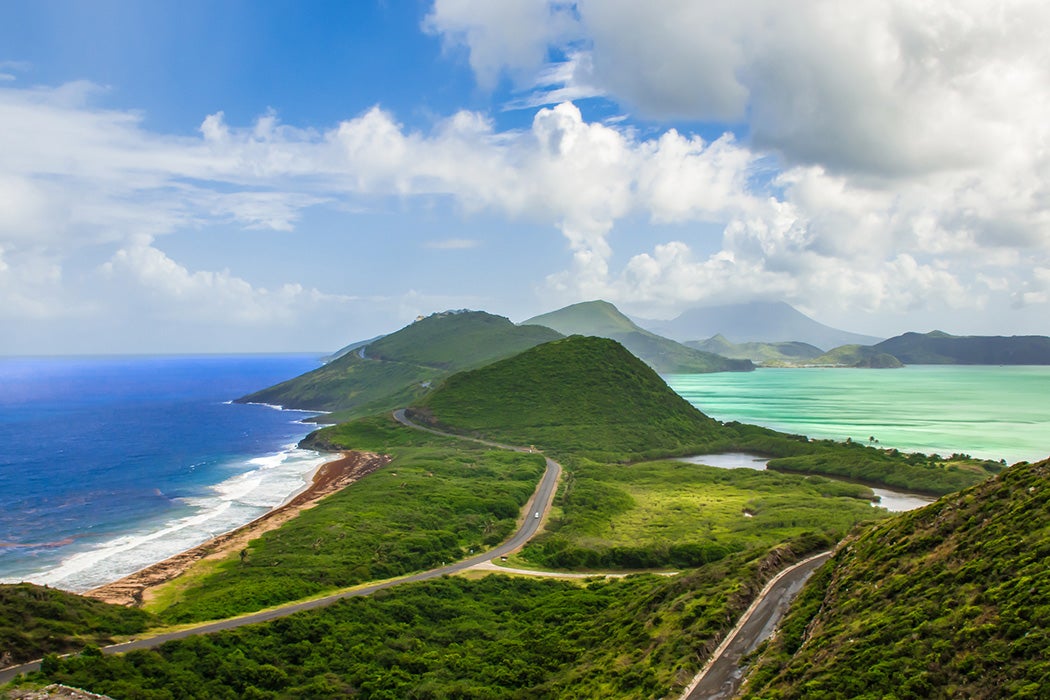It’s a long way from Nevis to Broadway (1,767 miles to be precise). But over the last decade, a new link has been forged between the theaters of Manhattan and the sands of this tiny Caribbean island, in the form of a certain Alexander Hamilton, portrayed unforgettably, in Lin Manuel Miranda’s smash hit musical. Renowned as one of the founding fathers of the United States, and the inaugural Secretary of Treasury serving from 1789 to 1795 during George Washington’s presidency, Hamilton may have left this minuscule island as a child but were he to return today, he would find little has changed in many ways.
In a 1952 essay, army historian Harold Larson explores the early life of Alexander, the son of a merchant and a storekeeper, revealing how the mercantile life was ingrained in this precocious child since birth. The island where he spent his first years was home to a scattering of cotton and sugar plantations, where enslaved laborers were exploited by the island’s colonial British masters, only gained independence—along with its larger sister island of Saint Kitts—in 1983. Architect Lavina Liburd examines this history of brutality and oppression, explaining that the present day citizens of Nevis have, in manifestations that include a National Dress competition (which relives the sartorial fashions of the slavery era), forged an identity out of the privations enforced upon their ancestors during the island’s darkest epoch.
Today, the Georgian-era houses, unspoiled beaches, and early-twentieth-century chattel houses (many owned by then newly freed slaves) mask a troublesome ancient history of the Caribs, the islands’ first inhabitants and a people whose repeated battles against invaders has left a physical legacy in the form of shell implements and pottery—a theme explored a century ago, by anthropologist C. W. Branch.
Compared to Nevis, with its population of barely 10,000, Saint Kitts is a relative giant, albeit rather a gentle one. John Candler’s diary of a visit here in 1849 shows an elegiac island of ridged hills and forlorn plantations, a lugubrious place whose beauty was shadowed by its recent history of subjugation. His Caribbean sojourn, during which he observed “the abuses suffered by the emancipated classes,” fed his anti-slavery sentiments and soon sent him on an antislavery mission to Portugal.
Weekly Newsletter
Almost two centuries later, in the post-independence era, the islands have realized their tourism potential. Now welcoming more than half a million visitors a year, Saint Kitts and Nevis is a playground of vanilla-colored sands and luxury hotels. Yet, like Nevis, Saint Kitts has retained its singular identity within the world of packaged leisure, showcased each year at the St. Kitts Music Festival where local artists (plus a slew of acts from the USA and other Caribbean islands) perform. Ethnomusicologist Jessica Baker describes the atmospheric flavor of the vibe that flows from the stage when local stars such as Christopher Martin perform their hits, rich with local patois.
The rhythms of life may stay languidly slow on Saint Kitts And Nevis, but its musical pulse—and cherished identities—continue to dazzle and beguile.







